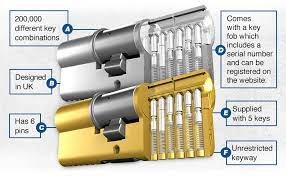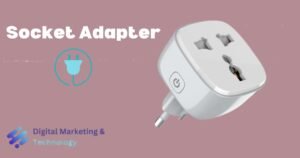The lock cylinder is a critical component of any locking mechanism, providing security for homes, vehicles, safes, and commercial buildings. But what exactly is a cylinder, and how does it work? In this comprehensive guide, we’ll explore its functionality, types, installation, maintenance, and tips for choosing the right one for your security needs.

What is a Lock Cylinder?
A cylinder is the core component of a lock that houses the keyway and internal mechanisms. When the correct key is inserted, the lock cy aligns the internal pins or wafers, allowing the lock to turn and engage or disengage the locking mechanism.
How Does a Lock Cylinder Work?
A standard lock cylinder consists of a plug, housing, and a set of pins or tumblers. Here’s a step-by-step breakdown of its operation:
- Key Insertion: The key is inserted into the keyway.
- Pin Alignment: The key’s cuts align the pins to the correct height.
- Shear Line Activation: When the pins align correctly, the shear line is cleared.
- Lock Engagement: The plug rotates, engaging the locking mechanism.
Types of Lock Cylinders
1. Pin Tumbler Cylinders
One of the most common types, these locks use a set of pins that must align with the shear line for the lock to turn. They are used in door locks, padlocks, and vehicle ignition systems.
2. Wafer Lock Cylinders
Similar to pin tumbler locks but use flat wafers instead of pins. They are commonly found in automobile locks and some cabinet locks.
3. Disc Detainer Cylinders
This type uses rotating discs instead of pins or wafers, making them resistant to picking and bumping. These locks are widely used in high-security applications.
4. Tubular Lock Cylinders
Featuring a circular keyway, these locks are found in vending machines, ATMs, and some bicycle locks.
5. Smart Lock Cylinders
These modern cylinders incorporate electronic mechanisms that allow keyless entry via codes, biometrics, or smartphone applications.
Common Applications of Lock Cylinders
- Residential Doors: Standard door locks and deadbolts use pin tumbler or smart lock cylinders.
- Automobiles: Ignition systems and door locks rely on wafer or pin tumbler cylinders.
- Commercial Security: High-security disc detainer or biometric cylinders are commonly used.
- Furniture and Cabinets: Tubular and wafer locks are used for desks, filing cabinets, and lockers.

How to Choose the Right Lock Cylinder
1. Security Level
Consider the level of security needed. High-security cylinders have anti-picking, anti-drilling, and anti-bumping features.
2. Key Control
Some cylinders come with restricted keyways, preventing unauthorized duplication.
3. Compatibility
Ensure the lock cylinder is compatible with your existing lock body or door mechanism.
4. Material and Durability
Choose cylinders made of hardened steel or brass for durability and resistance to wear and tampering.
5. Convenience
Smart lock cylinders provide added convenience with keyless entry and remote access.
Installation Guide for Lock Cylinders
Tools Required:
- Screwdriver
- Measuring tape
- Replacement cylinder (if applicable)
Step-by-Step Installation:
- Remove the Existing Cylinder: Unscrew the lock from the door or device.
- Insert the New Cylinder: Align it with the locking mechanism.
- Secure the Cylinder: Tighten the screws and test the key functionality.
- Final Adjustments: Ensure smooth operation before finalizing the installation.
Common Issues and Troubleshooting
1. Key Won’t Turn
- Lubricate the cylinder with graphite powder or a lock lubricant.
- Check if the key is worn or damaged.
2. Cylinder Sticking or Jamming
- Clean out dust and debris.
- Apply a small amount of lubricant.

3. Lock Cylinder is Loose
- Tighten any loose screws or replace worn components.
4. Broken Key Inside the Cylinder
- Use needle-nose pliers or a broken key extractor tool.
- If necessary, replace the lock cylinder.
Maintenance Tips for Lock Cylinders
- Regular Cleaning: Use compressed air to remove dirt and debris.
- Lubrication: Apply a lock-specific lubricant every few months.
- Check for Wear: Replace the cylinder if the key starts sticking frequently.
- Rekeying: If security is compromised, consider rekeying instead of replacing the lock.
Advantages of Upgrading to a High-Security Lock Cylinder
- Increased Protection: Advanced features prevent picking, drilling, and bumping.
- Enhanced Key Control: Restricted key duplication ensures better security.
- Longer Lifespan: Durable materials withstand wear and tear.
- Smart Lock Integration: Modern cylinders offer remote access and keyless entry.
Conclusion
A lock cylinder is a crucial part of any security system, whether for homes, vehicles, or commercial properties. Understanding its functionality, types, and maintenance can help you choose the best cylinder for your needs. By upgrading to high-security or smart lock cylinders, you can enhance protection and convenience in your daily life.
FAQs
1. What is the difference between a pin tumbler and a wafer lock cylinder?
A pin tumbler lock uses a series of pins that align with a shear line, while a wafer lock uses flat wafers instead of pins, making it more common in automotive locks.
2. Can I replace a lock cylinder myself?
Yes, with the right tools and a step-by-step guide, you can replace a lock cylinder without professional help.
3. How often should I lubricate my lock cylinder?
It is recommended to lubricate your lock cylinder every 6 months using a graphite-based lubricant.
4. Are smart lock cylinders more secure than traditional ones?
Smart lock cylinders offer enhanced security features such as biometric access and encrypted key codes, making them more secure than traditional locks.
5. How do I know if my lock cylinder needs replacing?
If your key is difficult to turn, the lock sticks frequently, or the cylinder is damaged, it may be time for a replacement.
This comprehensive guide provides all the essential details about lock cylinders, ensuring you make an informed decision when choosing and maintaining one. Let me know if you need further modifications! 🔐





